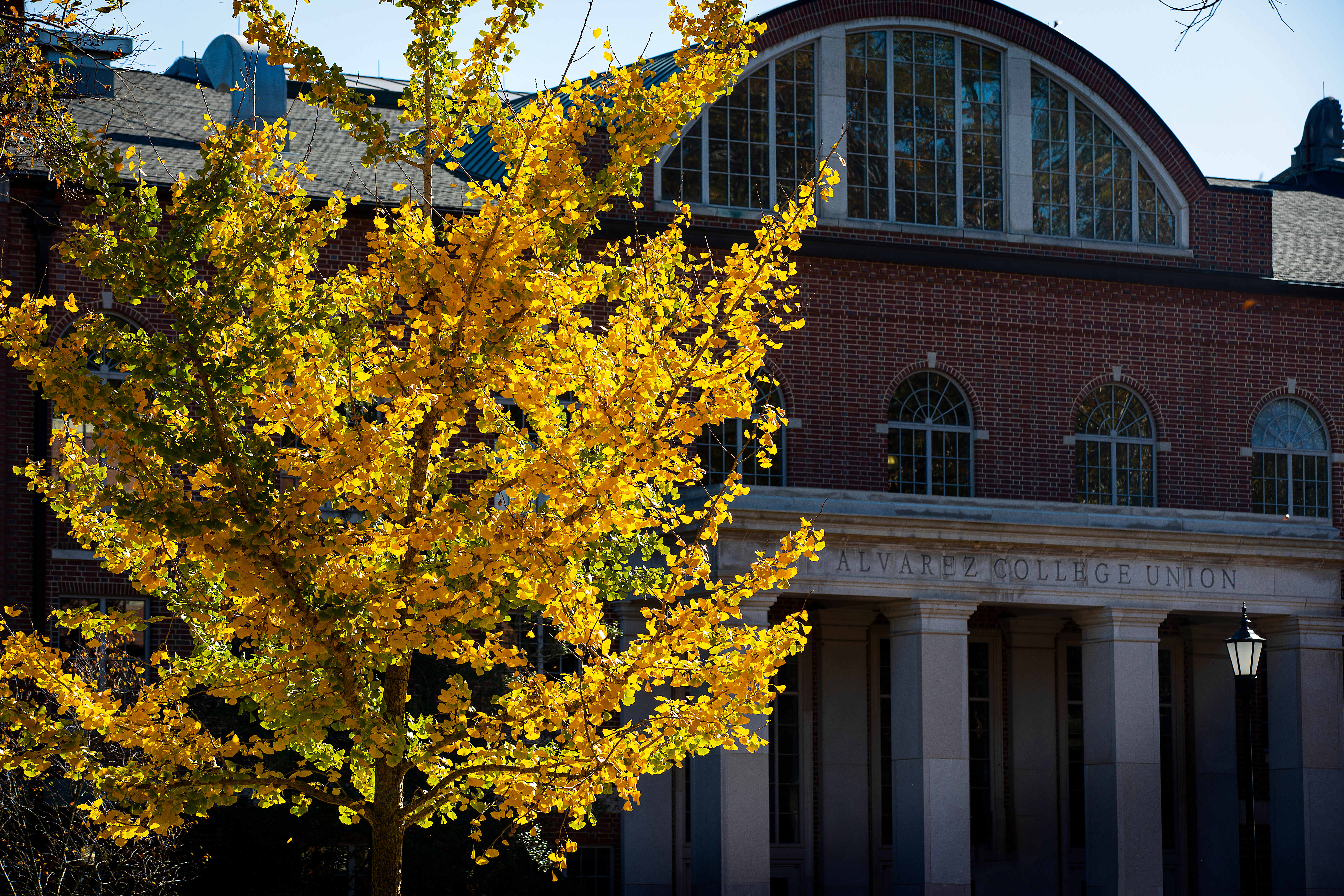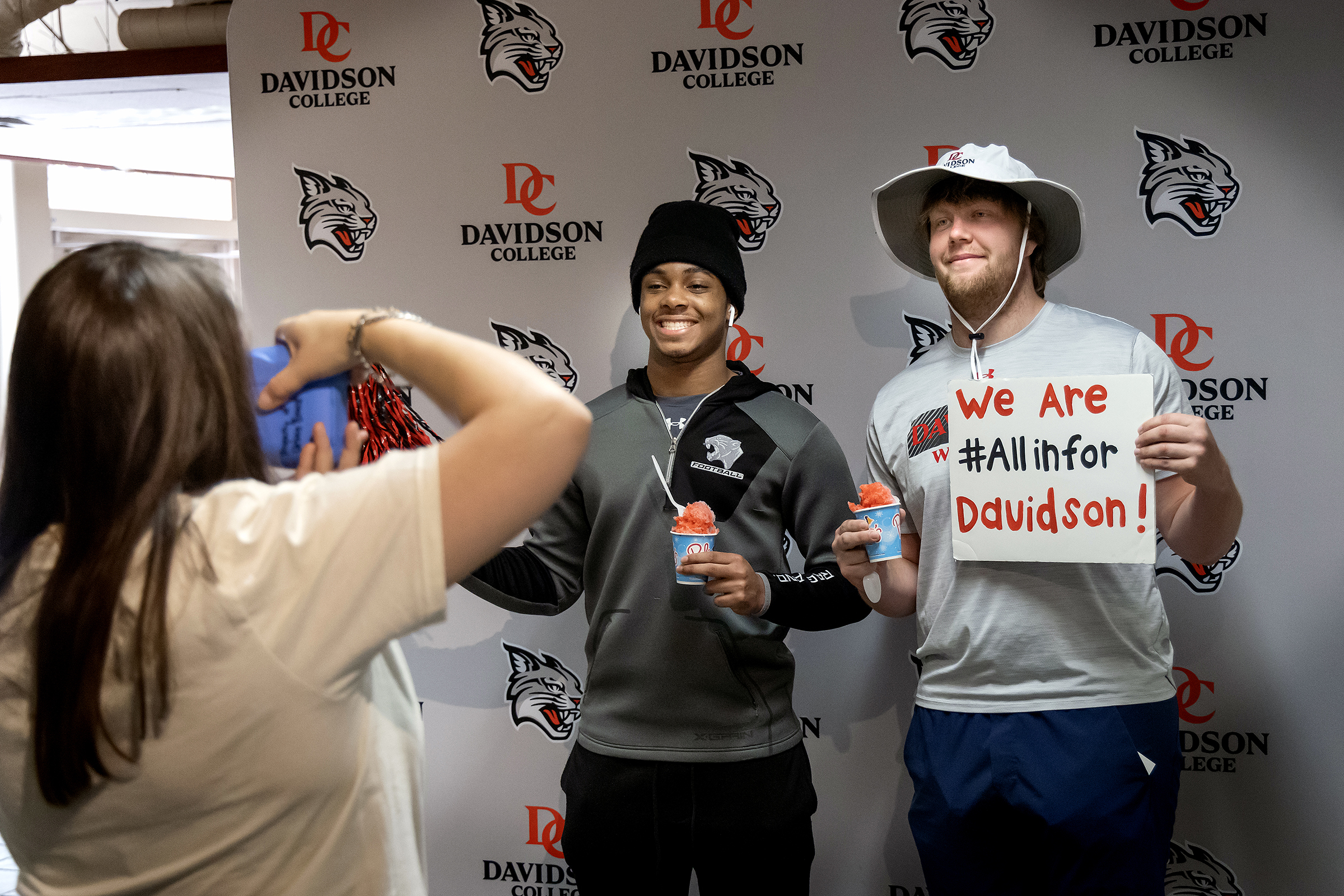Collectors and Shapers: Auction Includes Timeless Works from College Art Collection
June 8, 2017
Online Art Auction Underway
Don’t miss your chance to own timeless works of art. Years ago, Davidson College added a number of duplicate prints and photographs to our permanent art collection. The Davidson College Art Galleries are deaccessioning approximately 200 of these duplicate works in an online auction through Leland Little Auctions. Interested bidders can vote online until June 14. Proceeds will be used to purchase new works for the college's permanent art collection, which serves as a teaching tool across disciplines.
When Professor of Art Emeritus Herb Jackson '67 attended Davidson, the college's permanent art collection consisted of eight works on paper and etchings stored in a coat closet in Cunningham Building.
"I was always excited to go look at them, because they were actual artwork, rather than images in a book," he recalls.
Davidson's permanent collection has since grown to more than 3,200 pieces that span more than five centuries, including 10 large-scale sculptures. The collection has evolved to reflect the Davidson community and the curators, students, alumni and collectors who have shaped it.
"True to the liberal arts model, the collection is diverse," says Director and Curator of the Van Every/Smith Galleries Lia Newman. "It's more important to us that the works we accept have pedagogical value, rather than simply trying to develop a narrowly focused collection."
Open Invitation
With works ranging from the first-century-BCE to the 21st century, curators of the collection have kept an eye toward variety.
"I wanted to add works that would be useful for all aspects of the department," says Jackson, who was an associate professor of art and acting curator at the time.
Once Jackson established the art major, his goal was to let the world know that Davidson was a player in the art world–he did so with a splash.
"I had entered many print and drawing competitions, and I knew I could make improvements to create a bigger and better competition," he says.
The first of five Davidson National Print and Drawing Competitions took place in 1972, with 2,523 submissions from 49 states. After five competitions, Davidson gained 40-45 pieces from purchase awards.
"At that point, I felt like I could confidently say we had a collection," Jackson says.
He continued to build the collection by attending Sotheby's auctions, always looking out for the pedagogical merits of a piece, as well as affordability and scale–storage has long been at a premium on campus.
"I also shamelessly asked collectors to give pieces to the collection," he adds. Homage to the Square, I-S h by Joseph Albers is one example of a piece acquired thusly.
"I saw it in a collector's apartment and said, ‘You should give that to the college,' and he did," recounts Jackson. "It's often the graciousness of others that helps add to the collection. We're fortunate to have donors out there who want to give pieces we can teach."
Current curator Newman cites Ralph Blakely's '67 gift of Rembrandt's Return of the Prodigal Son etching as a prime example. Blakely currently serves on the Art Collection Advisory Committee, a group of alumni and friends that advise the gallery on acquisitions and programs.
"Many donors are aware of the value of a teaching collection and what it means for us to have a really good representation of an artist's work," she says.
John MacMahon '95, also a contributor to the collection, hopes to see the collection evolve even more.
"Hopefully, over time, our alumni base will be more focused on collecting. That opens up the ability for donations, which is the ideal way for institutions to build their collections," he says.
MacMahon's contributions have primarily been in the realm of contemporary art, specifically photography, which he views as crucial for a teaching collection.
"I'm looking more at prints and multiples for certain artists that are accessible and capture both the conceptual and artistic framework of the artist, so that often leads to photography," he explains. "I want students to see work by artists that mirrors the current contemporary dialogue in the art world.
MacMahon worked with former Curator and Gallery Director Brad Thomas to organize a show of works exclusively from his collection. The two met through James Pepper '65, the uncle of one of MacMahon's classmates, who suggested MacMahon consider the collection.
"If I give, it may encourage other people to give," Pepper explains. "I personally thought it was silly for me to have works that I appreciate and value so much on my walls. I lived with them for a decade or two or three, and just to have something when you die is not a motivating factor in keeping something. I'll remember it for the rest of my life. I don't need it on a wall where it becomes invisible to me."
A number of the pieces Pepper has given to the collection came from auctions at Sotheby's that benefitted the Gay Men's Health Crisis in the 1980s and 1990s.
"I was there bidding to make sure everything went at good prices, and every now and then, I would end up winning," he says. Some of the works in the collection acquired by Pepper are Thomas Hart Benton's drawing Young Boy with Hat and Jim Dine's mixed media Untitled (Black Heart).
Museum Campus
The majority of the collection resides in a museum-standard, temperature- and humidity-controlled study and storage area in the Belk Visual Arts Center. A rack system allows the artworks to be safely stored, but also seen and used.
"We want it to be an active space for classes and individuals where it's easy for them to come in and view pieces," Newman says.
In addition to the study facility, artwork from the collection can be found in every building on campus and is regularly rotated throughout.
"It's our mission to make the entire campus into a museum space so that you come into contact with art on an everyday basis," Newman explains. "Often, the alternative gallery spaces on campus are curated by students."
In the Cunningham theatre building, exhibitions often relate to upcoming theatre productions, and those in Chambers might reflect campus-wide themes or global issues. New gallery space opens this fall in the Center for Career Development.
The collection not only graces the walls of campus buildings, but also extends to the spaces between them.
The college's sculpture collection, which began with the Pepper family's gift of Rodin's Jean d'Aire (purchased from the Van Every estate), includes both indoor and outdoor pieces.
"Outdoor sculpture doesn't block or obstruct your view; the works on campus reframe the environment for you," Newman says. "Works like Spirit Waves Fountain by Jesus Moroles, a gift of Hugh A. McAlister '61, has become another outdoor classroom. It makes you think differently, interact with your environment differently and see things that you wouldn't see otherwise."
Overall the sculpture collection has a figurative feel, but it hasn't been focused that way intentionally. The college is interested in adding works by artists of significant caliber, again, with a focus on pedagogical use.
"We want the works to be important and thought-provoking, and enjoyable to live with," Newman adds.
Pepper gifted Jaume Plensa's Waves III to Davidson after many conversations about why it would be a good piece for an educational institution.
Generally speaking, Pepper feels art on campus increases tolerance, in its own unique way.
"You take a 17- or 18 -year-old who hasn't been exposed to art into an art museum, and they will say ‘I hate that, I love that.' If you take them enough times they drop the word ‘hate.' They may not love the work, but they see that other people like it, and after a while, they might come to like it, even though it's not their taste," he explains. "Learning that differences are good is a stepping stone for something you love–a piece of art or an idea."
Full Circle
The gallery often works with students, who provide a new perspective on the collection.
"Interns from the multicultural affairs office approached us about curating and displaying works at the Spencer Weinstein Center for Community and Justice. They asked us questions that pointed out the necessity of acquiring more works from artists of different backgrounds," Newman says.
During the first exhibition of the fall semester, students and the public will be involved in the voting process to determine which works the gallery will purchase for the collection.
"The exhibition is sort of a throwback to the Davidson National Print and Drawing Competition, last hosted 40 years ago. That exhibition was our point of departure, though it's become a very contemporary look at artists' processes," Newman says.
"While I've enjoyed supporting multiple institutions, I do believe strongly that because of where the arts program is at Davidson today, and because it's a teaching collection, you can still make an enormous impact with even small donations," MacMahon adds.
The story, written by Morgan Orangi '13, originally appeared in the fall 2016 issue of the Davidson Journal.



